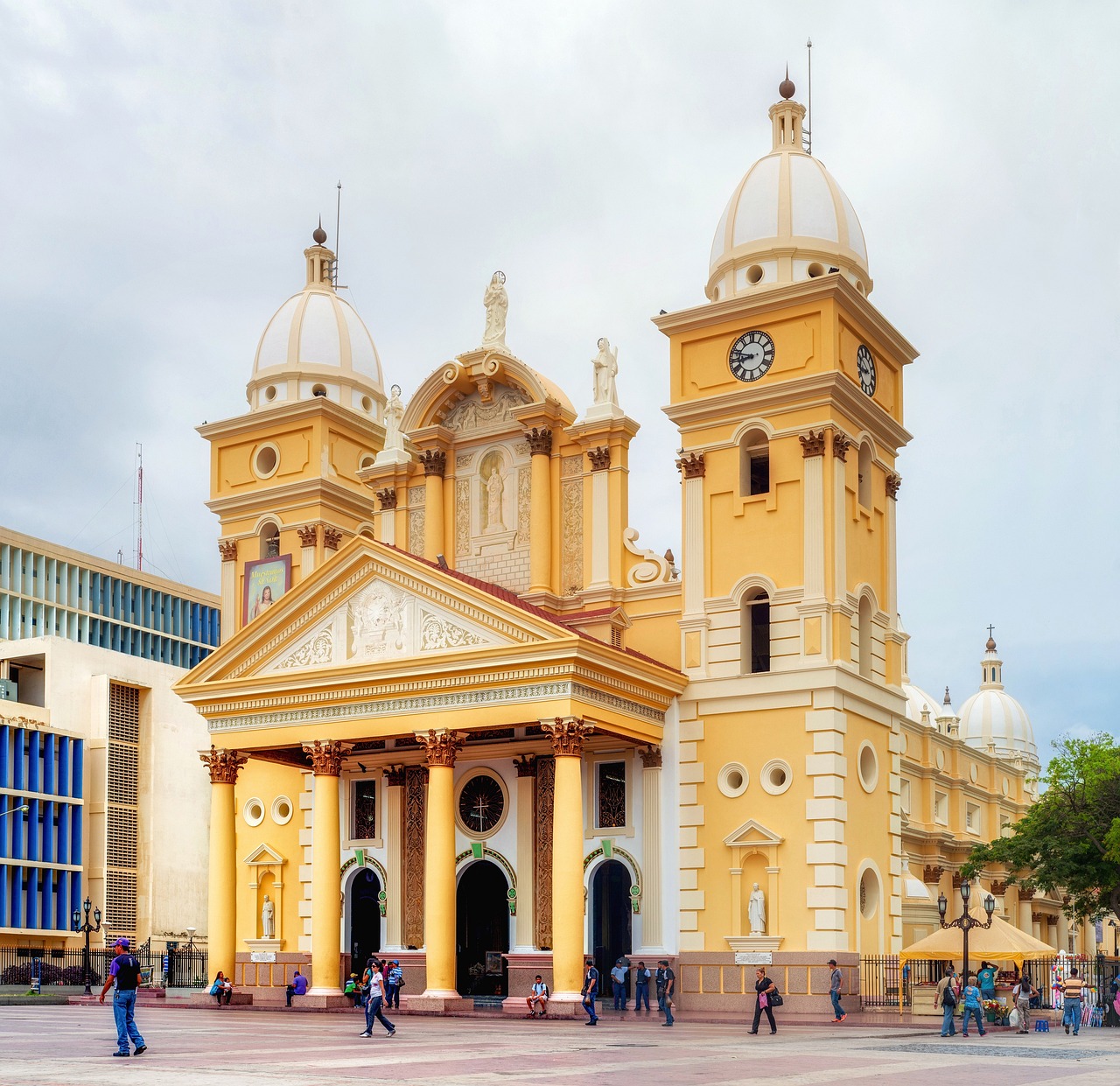Venezuela Video
Weathering Venezuela: Seasonal Changes and What to Expect
Venezuela, a beautiful country located on the northern coast of South America, experiences a diverse range of climates due to its varied topography and proximity to the Equator. From the tropical rainforests of the Amazon Basin to the stunning Caribbean coastline, Venezuela offers a unique weather experience for visitors and residents alike. In this article, we will explore the seasonal changes in Venezuela and what to expect during each season.
Season 1: Dry Season
The dry season in Venezuela typically occurs from December to April. During this time, the country experiences a decrease in rainfall, making it an ideal period for outdoor activities and exploring the natural wonders of Venezuela. Here are some key features of the dry season:
- Sunshine: Expect plenty of sunshine during the dry season, with clear skies and minimal cloud cover.
- Temperature: The dry season brings warm temperatures, ranging from 25 to 35 degrees Celsius (77 to 95 degrees Fahrenheit).
- Outdoor Activities: With the decrease in rainfall, outdoor activities such as hiking, wildlife spotting, and exploring national parks become more accessible.
The abundant sunshine provides an excellent opportunity for sunbathing and enjoying the stunning beaches along the Venezuelan coast.
It is advisable to wear light, breathable clothing and stay hydrated to combat the heat.
Popular destinations during the dry season include Canaima National Park, Angel Falls, and Los Roques Archipelago.
Season 2: Rainy Season
The rainy season in Venezuela typically occurs from May to November. During this period, the country experiences increased rainfall, which rejuvenates the lush green landscapes and supports the diverse ecosystems. Here are some key features of the rainy season:
- Rainfall: Expect frequent showers and thunderstorms during the rainy season, especially in the afternoons and evenings.
- Temperature: The rainy season brings slightly cooler temperatures, ranging from 20 to 30 degrees Celsius (68 to 86 degrees Fahrenheit).
- Lush Vegetation: The increased rainfall during this season nourishes the vegetation, resulting in vibrant green landscapes and blooming flowers.
It is advisable to carry an umbrella or raincoat and plan indoor activities during peak rainfall hours.
Light layers are recommended to stay comfortable during both rain and sunshine.
Exploring Venezuela’s rainforests and national parks, such as Canaima National Park and Henri Pittier National Park, is a must during this time.
Season 3: Transition Seasons
Venezuela experiences two transition seasons, known as “El Verano de San Juan” and “El Verano de Santa Clara.” These seasons occur during the months of June and December, respectively. Here are some key features of the transition seasons:
- Shorter Duration: The transition seasons are relatively short and act as a bridge between the dry and rainy seasons.
- Varied Weather: During the transition seasons, the weather can be unpredictable, with a mix of sunny and rainy days.
- Festivals and Celebrations: The transition seasons coincide with several festivals and celebrations in Venezuela, such as San Juan’s Day and Christmas.
They usually last for a few weeks and showcase characteristics of both the dry and rainy seasons.
It is advisable to check the local weather forecast before planning outdoor activities.
These festivities offer a unique cultural experience and an opportunity to immerse yourself in Venezuelan traditions.
Venezuela Image 1:

Season 4: Coastal Winds
Along the northern coast of Venezuela, a phenomenon known as the “Coastal Winds” occurs. This season is characterized by strong winds that blow from the northeast, bringing relief from the heat and humidity. Here are some key features of the Coastal Winds season:
- Windy Conditions: Expect strong and consistent winds along the coast, especially in areas like La Guaira and Paraguaná Peninsula.
- Temperature: The Coastal Winds season brings slightly cooler temperatures compared to other coastal seasons, ranging from 25 to 30 degrees Celsius (77 to 86 degrees Fahrenheit).
- Clear Skies: The winds often clear the skies, providing excellent visibility for water activities and coastal views.
These winds make it an ideal time for activities such as windsurfing and kiteboarding.
Enjoy the pleasant breeze while exploring the beautiful beaches and coastal towns.
Don’t forget to bring your camera to capture the stunning vistas.
Season 5: Andean Highlands
The Andean Highlands region in Venezuela experiences a unique climate due to its high elevation. Here are some key features of the Andean Highlands season:
- Cooler Temperatures: The Andean Highlands have cooler temperatures throughout the year, with averages ranging from 10 to 20 degrees Celsius (50 to 68 degrees Fahrenheit).
- Mountain Cloud Forests: The high altitude creates a favorable environment for cloud forests, which are characterized by misty landscapes and diverse flora and fauna.
- Outdoor Adventures: The Andean Highlands offer a range of outdoor activities, including hiking, mountaineering, and birdwatching.
Be prepared with warm clothing, especially if you plan to visit cities like Mérida or San Cristóbal.
Explore the cloud forests of the Sierra Nevada National Park and experience the unique biodiversity.
Enjoy the breathtaking scenery and immerse yourself in the natural beauty of the highlands.
Venezuela Image 2:

Season 6: The Gran Sabana
The Gran Sabana, located in southeastern Venezuela, is a vast savannah region that experiences its own distinct weather patterns. Here are some key features of the Gran Sabana season:
- Dry Season: The Gran Sabana experiences a dry season from December to March, characterized by minimal rainfall and clear skies.
- Wet Season: From April to November, the Gran Sabana transitions into the wet season, with increased rainfall and occasional thunderstorms.
- Unique Flora and Fauna: The Gran Sabana is home to a diverse range of plant and animal species, including the carnivorous pitcher plants and the rare tepui swift.
This is the best time to visit the iconic tabletop mountains, known as tepuis, and witness the stunning landscapes.
During this time, the waterfalls and rivers in the region become more vibrant, creating a picturesque setting.
Explore the national parks in the region, such as Canaima National Park, to witness the rich biodiversity up close.
Season 7: Los Llanos
Los Llanos, a vast plains region in central Venezuela, experiences its own distinct weather patterns. Here are some key features of the Los Llanos season:
- Dry Season: From November to April, Los Llanos experiences a dry season characterized by low rainfall and warmer temperatures.
- Wet Season: From May to October, Los Llanos transitions into the wet season, with increased rainfall and flooded plains.
- Savannah Adventures: Los Llanos offers unique experiences such as horseback riding, wildlife safaris, and fishing in the vast rivers and lagoons.
This is the ideal time for wildlife enthusiasts to spot animals such as capybaras, caimans, and a variety of bird species.
During this time, the wildlife becomes more active, and the plains transform into a lush, green landscape.
Immerse yourself in the cowboy culture and explore the untamed beauty of the plains.
Venezuela Image 3:

Conclusion
Venezuela’s seasonal changes provide a diverse and captivating weather experience for all visitors. Whether you prefer the sunny beaches, lush rainforests, or the unique climates of the Andean Highlands, Gran Sabana, or Los Llanos, Venezuela offers something for everyone. It is essential to plan your visit according to the specific season to make the most of your time in this beautiful country.
References
- Gypsy Warrior – https://gypsywarrior.com
- Canaima National Park – https://www.canaima-nationalpark.com
- Angel Falls – https://www.angelfalls.com
- Los Roques Archipelago – https://www.losroques.org
- Henri Pittier National Park – https://www.henripittier-nationalpark.com
- Sierra Nevada National Park – https://www.sierranevada-nationalpark.com
- Gran Sabana – https://www.gransabana.com
- Los Llanos – https://www.losllanos.com


